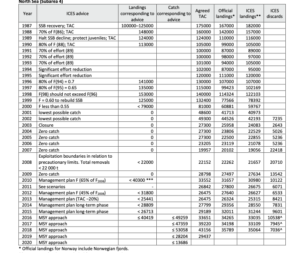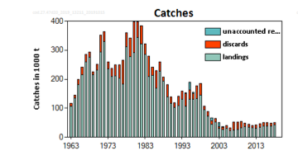On 20 May, the European Commission published a new Biodiversity Strategy [link].
In it, they mention the fisheries a few times:
1. Marine resources must be harvested sustainably and there must be zero-tolerance for illegal practices. In this regard, the full implementation of the EU’s Common Fisheries Policy, the Marine Strategy Framework Directive and the Birds and Habitats Directives is essential.
2. propose a new action plan to conserve fisheries resources and protect marine ecosystems by 2021.
3. the by-catch of other species must be eliminated or, where this is not possible, minimised so as not to threaten their conservation status. To support this, data collection on by-catch for all sensitive species needs to be stepped up.
What’s interesting is the Communication is silent on anything new on implementing the non-implementation of the landing obligation.
That’s strange because it is in the Mission Letter (1 December 2019) from President von der Leyen to Commissioner Sinkevičius states:
“You will focus on the *full implementation of the reformed Common Fisheries Policy*, including the landing obligation.”
The Commissioner is speaking to the environment committee today about the biodiversity strategy. I wonder if he will wash the dirty linen in public, or hope MEPs have developed amnesia and don’t know something they voted for in overwhelming numbers is being ignored.
It seems a lot of officials want to forget that the requirement to land fish and not discard them is in the Common Fisheries Policy [law].
3 Simple Questions
1. Is discarding still happening despite the landing obligation
The discarding of cod in the north sea has been prohibited since 1 January 2016 (Art. 15(1)(c)(i).
Since then, according to scientific advice from ICES, discards have continued at varying levels.


Source: ICES Advice, 9 November 2019 (link).
Discarding is around 20% of the catch, or for every five fish caught, one is thrown back in the sea.
2. CCTV
A good way of reducing discarding is to have onboard CCTV. It was tested extensively in trials before the new CFP was adopted.
From 2009 to 2015 about 70 vessels covering about 40% of cod catches in North Sea (42 UK, 24 Denmark, 2 Germany and a couple from the Netherlands and Sweden) used CCTV.
Today, no vessels use CCTV to implement the landing obligation.
3. How you can tell fish is being thrown back in the sea
Usually, you can expect 15% of the fish caught to be undersized.
Today, only 2% of fish landing at the docks are undersized.
Fishing gear selectivity has not advanced as quickly as the figures would suggest.
The simplest reason for the large decline in undersized fish being landed is they are being dumped back dead in the sea.
An easy step to improve things
The Commission’s Biodiversity is an empty shell if it avoids dealing with the elephant in the room – the non-implementation of the landing obligation.
The Commission can put out papers but, if it keeps avoiding enforcing the law on discards, it means nothing but cheap headlines.